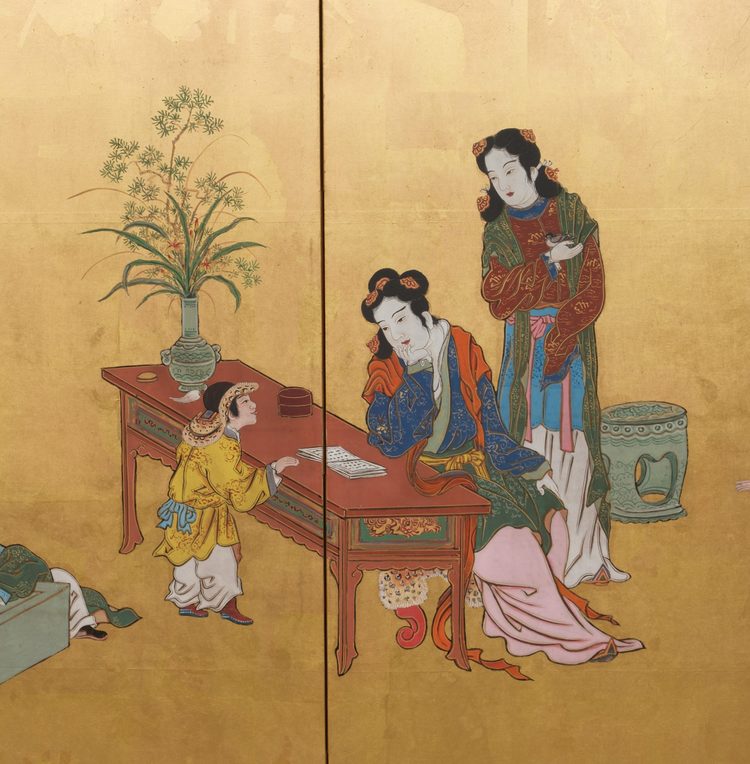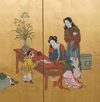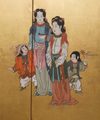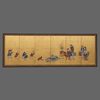A JAPANESE 6-PANEL BYÔBU WITH PLAYING CHILDREN, SECOND HALF 19TH CENTURY (EARLY MEIJI PERIOD)
A 6-panel byôbu屏風 (folding screen) with an animated Kanô School-style painting on gold leaf of karako 唐子 (Chinese children) at play under supervision of four noblewomen. The motif “One Hundred Boys at Play” is a Chinese theme wishing the viewer many generations of accomplished scholars and prosperity, as it symbolises longevity and health for offspring. Colour and ink on shiny gold leaf. Mounted by two borders, a thin green brocade one, and a broad cotton one with a flower pattern. Protected by a black lacquer frame with its original hardware.
Total width: 256.8 cm (2 by 44 cm, 4 by 42.2 cm).
Height: 90.7 cm.
Considering its age in a very good condition with some minimal traces of wear conform age and old restorations.






